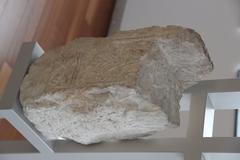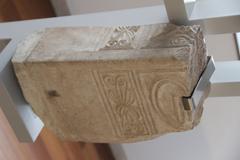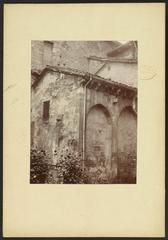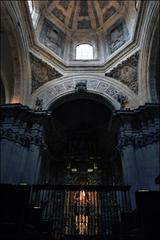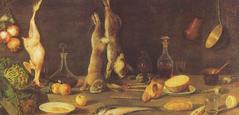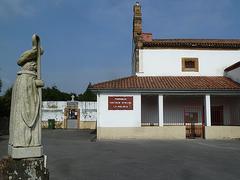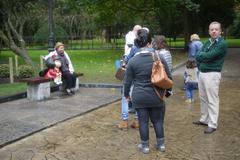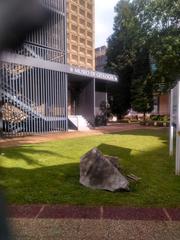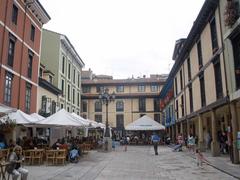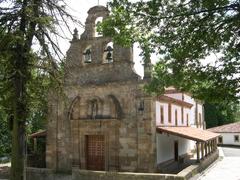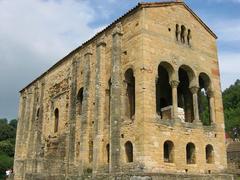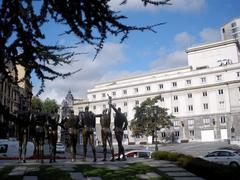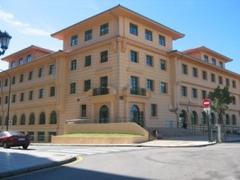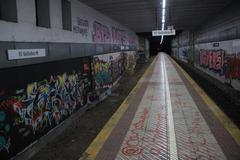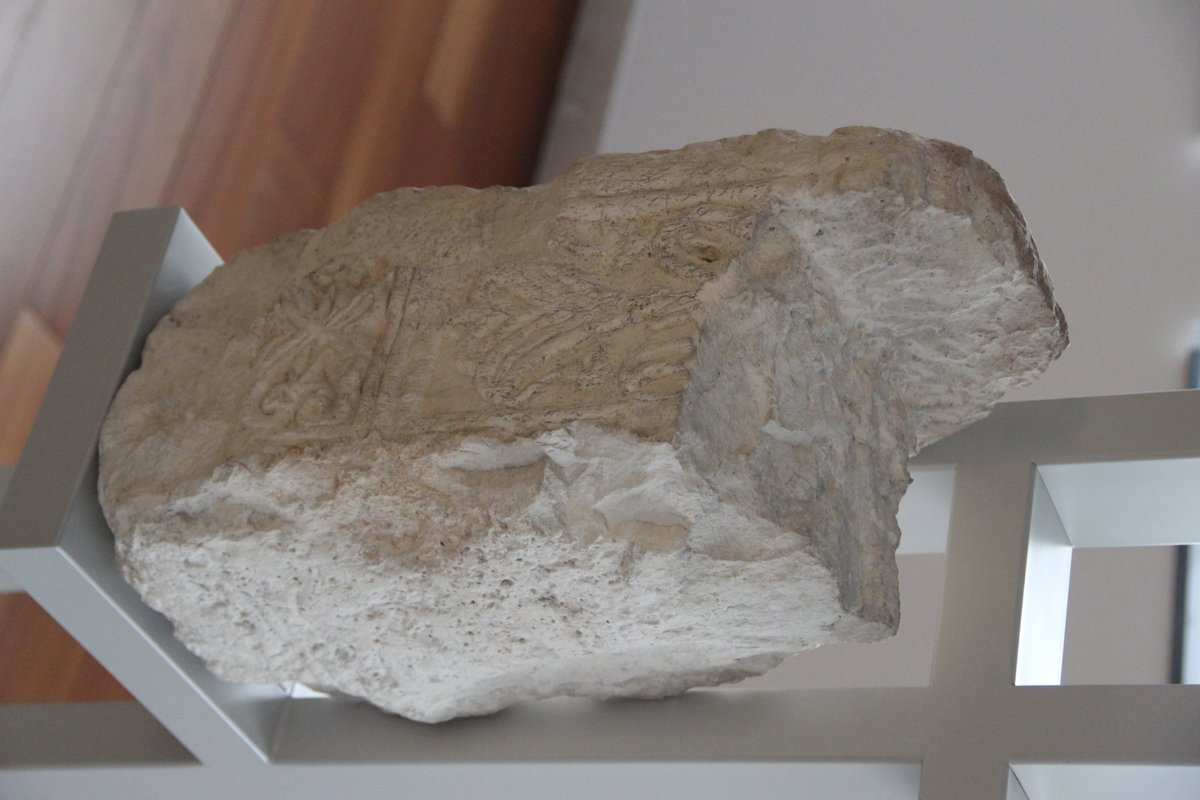
Visiting Hours and Tickets for Santa María de Bendones in Oviedo City
Date: 01/08/2024
Introduction
Santa María de Bendones, nestled in the picturesque parish of Bendones just outside Oviedo, Spain, is a captivating example of pre-Romanesque architecture. Dating back to the early 9th century, this historical gem provides a unique glimpse into the artistic and cultural developments of the Asturian monarchy. The church, likely constructed during King Alfonso II’s reign, showcases a blend of Visigothic, Mozarabic, and Carolingian influences (Asturias.com). Visitors are drawn to its austere exterior and elaborate interior, featuring intricate wooden ceilings and decorative chancel arches. Over the centuries, Santa María de Bendones has not only stood as a monument of architectural significance but also as a symbol of the Christian resistance and identity in northern Spain, particularly during the tumultuous period following the Muslim conquest of the Iberian Peninsula. This guide aims to provide comprehensive visitor information, historical context, and travel tips to ensure a fulfilling visit to this remarkable site.
Table of Contents
- Introduction
- Historical Background
- Visitor Information
- Visitor Experience
- FAQ
- Conclusion
- Call to Action
Historical Background
Origins and Construction
Santa María de Bendones, located in Oviedo, Spain, is a remarkable example of pre-Romanesque architecture, dating back to the early 9th century. This period, known as the Asturian monarchy, saw the construction of numerous religious edifices that have become significant cultural and historical landmarks. The church was likely built during the reign of King Alfonso II (791-842), a period marked by the consolidation of the Christian kingdom in the northern Iberian Peninsula. The exact date of its construction is not definitively known, but it is generally placed in the early 9th century, making it one of the oldest surviving structures from this era (Asturias.com).
Architectural Significance
Santa María de Bendones is a quintessential example of Asturian pre-Romanesque architecture, characterized by its unique blend of Visigothic, Mozarabic, and Carolingian influences. The church’s layout is a basilica plan with a single nave, a rectangular apse, and a distinctive horseshoe arch, which is a hallmark of Mozarabic influence. The use of local materials, such as limestone and sandstone, and the incorporation of intricate stone carvings and decorative elements, reflect the craftsmanship and artistic sensibilities of the period.
The church’s façade is relatively austere, with minimal ornamentation, which is typical of pre-Romanesque architecture. However, the interior boasts more elaborate features, including a wooden ceiling with intricate carvings and a chancel arch adorned with geometric and vegetal motifs. These elements highlight the fusion of different artistic traditions that characterize Asturian pre-Romanesque architecture (Asturias.com).
Historical Context
The construction of Santa María de Bendones occurred during a pivotal period in the history of the Asturian kingdom. Following the Muslim conquest of the Iberian Peninsula in the early 8th century, the northern Christian kingdoms, including Asturias, became bastions of resistance against Islamic rule. King Alfonso II, known as “the Chaste,” played a crucial role in consolidating the Asturian kingdom and promoting the construction of religious buildings as symbols of Christian identity and resilience.
Restoration and Preservation
Over the centuries, Santa María de Bendones has undergone several phases of restoration and preservation to maintain its structural integrity and historical authenticity. The most significant restoration efforts took place in the 20th century, led by the Spanish architect Luis Menéndez Pidal. These efforts aimed to address the deterioration caused by natural aging and previous, less sympathetic restoration attempts.
Menéndez Pidal’s restoration work focused on preserving the original architectural features and materials while ensuring the church’s structural stability. This included reinforcing the foundations, repairing the stone masonry, and restoring the wooden ceiling and decorative elements. The restoration efforts have been guided by a commitment to maintaining the church’s historical authenticity and cultural significance (Asturias.com).
Cultural and Religious Significance
Santa María de Bendones holds significant cultural and religious importance for the region of Asturias and beyond. As one of the earliest examples of pre-Romanesque architecture, it provides valuable insights into the artistic and architectural developments of the early medieval period. The church’s unique blend of architectural styles reflects the cultural interactions and exchanges that characterized the Iberian Peninsula during this time.
The church also serves as a testament to the resilience and continuity of Christian traditions in northern Spain. It stands as a symbol of the Asturian kingdom’s resistance against Islamic rule and its efforts to preserve and promote Christian identity and heritage. The church’s historical and cultural significance has been recognized through its designation as a Bien de Interés Cultural (Asset of Cultural Interest) by the Spanish government.
Visitor Information
Ticket Prices and Visiting Hours
Visitors can explore Santa María de Bendones for a nominal entry fee. The church is open to visitors from 10 AM to 6 PM, Tuesday through Sunday. It is closed on Mondays and public holidays.
Travel Tips
- Best Time to Visit: The best time to visit is during the spring and autumn months when the weather is mild, and the surrounding landscape is particularly picturesque.
- How to Get There: Santa María de Bendones is accessible by car, taxi, or public transport from Oviedo. There are parking facilities available near the church.
- What to Bring: Comfortable walking shoes, a camera, and a water bottle are recommended.
Nearby Attractions
- Oviedo Cathedral: A stunning example of Gothic architecture, located just a short drive from Santa María de Bendones.
- San Miguel de Lillo: Another pre-Romanesque church nearby, offering further insights into the architectural style of the period.
- Pre-Romanesque Interpretation Center: Located in Oviedo, this center provides a comprehensive overview of the region’s pre-Romanesque heritage.
Accessibility
Santa María de Bendones is partially accessible to visitors with mobility issues. While the exterior and main nave are accessible, some areas inside the church may have limited accessibility due to narrow passages and steps.
Visitor Experience
Guided Tours and Exhibits
Visitors to Santa María de Bendones can explore the church’s rich history and architectural features through guided tours and interpretive displays. The church is part of the Pre-Romanesque Interpretation Center in Oviedo, which offers a comprehensive overview of the region’s pre-Romanesque heritage. The center features exhibits on the architectural and artistic traditions of the period, as well as the historical context in which these buildings were constructed (Asturias.com).
Scenic and Tranquil Setting
The church’s serene and picturesque setting, surrounded by the lush landscapes of Asturias, provides a tranquil and contemplative atmosphere for visitors. The combination of historical significance, architectural beauty, and natural surroundings makes Santa María de Bendones a must-visit destination for those interested in the rich cultural heritage of northern Spain.
FAQ
- What are the visiting hours? The church is open from 10 AM to 6 PM, Tuesday through Sunday.
- How much are the tickets? A nominal entry fee is charged for visitors.
- Is the church accessible for people with disabilities? The church is partially accessible, with some areas having limited accessibility.
- What nearby attractions can I visit? Nearby attractions include Oviedo Cathedral, San Miguel de Lillo, and the Pre-Romanesque Interpretation Center.
Conclusion
Santa María de Bendones stands as a testament to the resilience and cultural richness of the Asturian kingdom, encapsulating the essence of pre-Romanesque architecture and the region’s historical narrative. The church’s blend of architectural styles and artistic traditions offers valuable insights into the early medieval period, making it a must-visit for history enthusiasts and architectural aficionados alike. With its serene setting and meticulously preserved features, Santa María de Bendones provides a tranquil yet enriching experience for visitors. The church’s recognition as a Bien de Interés Cultural underscores its importance in Spain’s cultural heritage. Whether exploring the detailed carvings inside or enjoying the scenic surroundings, a visit to Santa María de Bendones is sure to leave a lasting impression. For those planning to explore further, nearby attractions such as Oviedo Cathedral and San Miguel de Lillo add to the rich tapestry of historical sites in the region. By offering a comprehensive overview of its history, visitor information, and travel tips, this guide aims to enhance your visit to this remarkable monument (Asturias.com).
Call to Action
To stay updated on more historical sites and travel tips in Oviedo, download the Audiala app, check out our related posts, or follow us on social media.
References
- Asturias.com. (n.d.). Oviedo Pre-Romanesque Interpretation Center. Retrieved from Asturias.com
